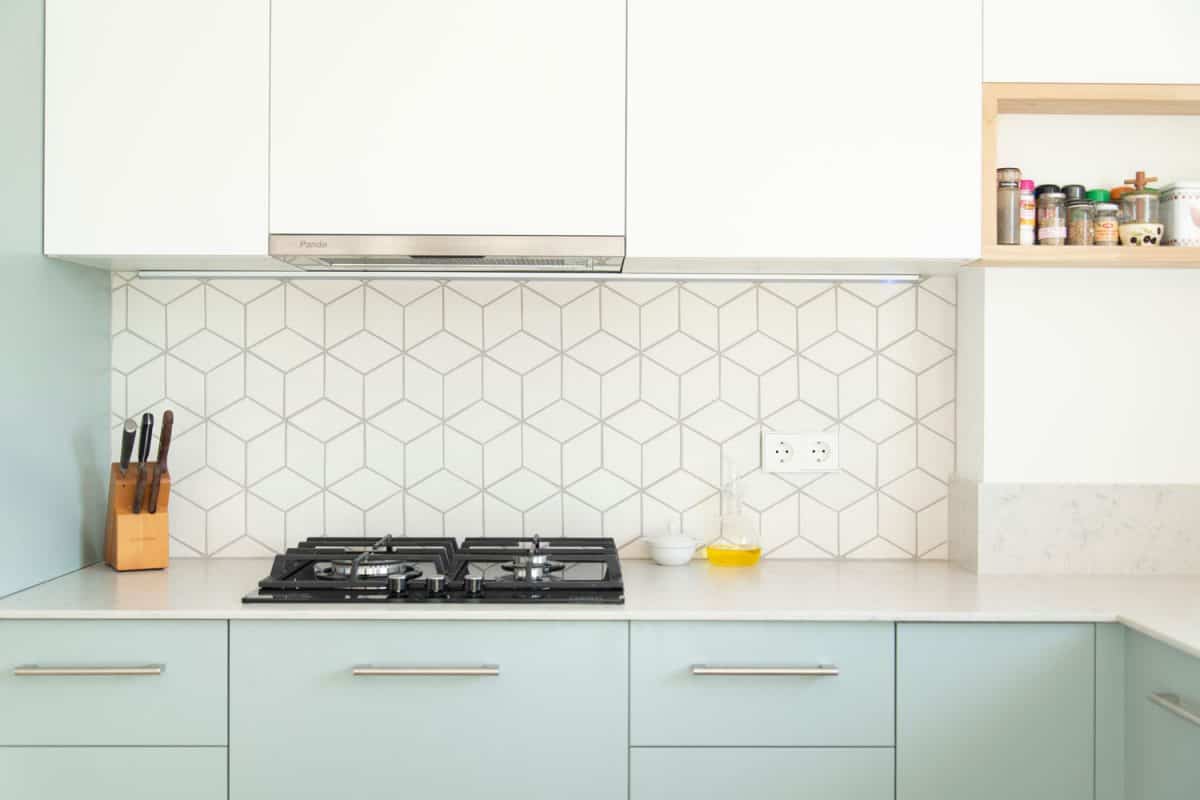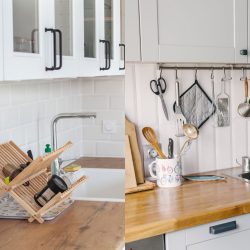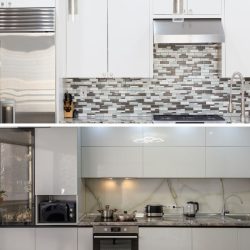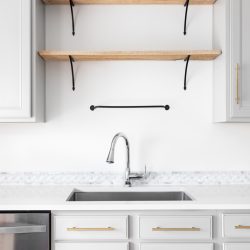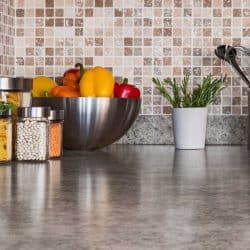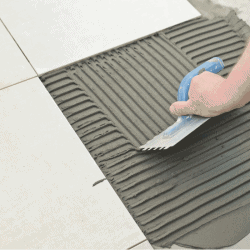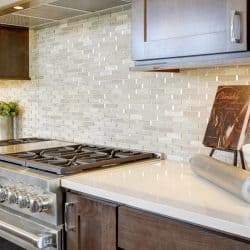Deciding how to decorate your kitchen can feel like an endless task. Are you thinking of putting in a backsplash to brighten things up but don't know if it needs a trim or edging? Well, we've done plenty of research and have the answers here for you. Let's check this out.
In general, you want to have a trim or edging on your backsplash. Trim/edging tends to keep backsplash tiles protected from damage while also looking more high-end, so it serves a few purposes. Having trim alongside a backsplash will also frame it, which is important to give each section of your kitchen a defined design.
As we begin, we will cover all things kitchen backsplashes and discuss how to design yours. Whether it's time to renovate or you need ideas for your dream kitchen, we're here to offer you some help. With that said, let's dive right into this post!
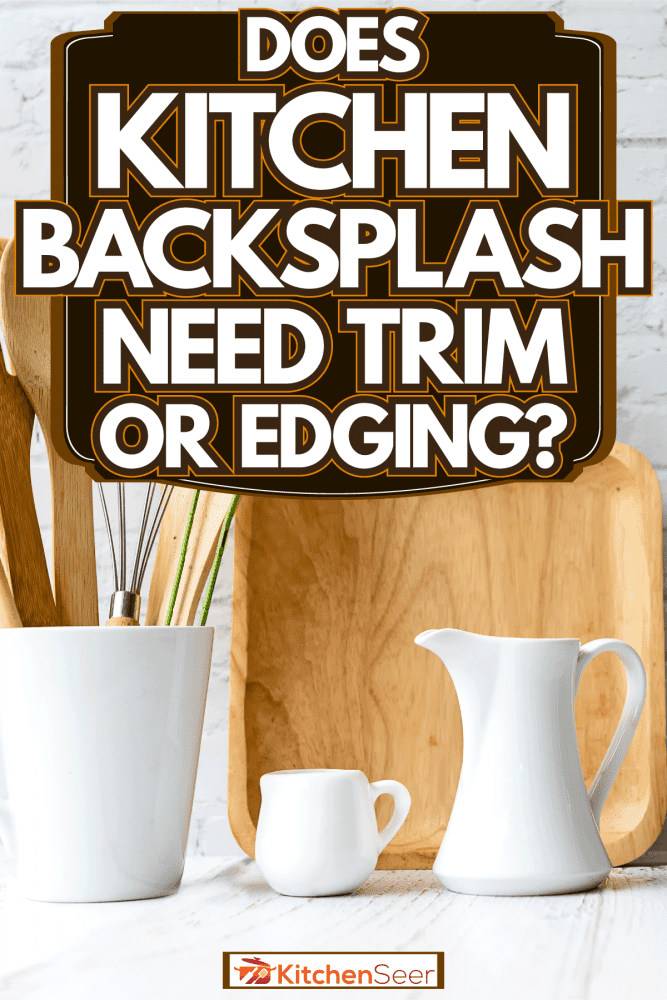
Do I Need To Add Trim Or Edging To My Backsplash?
Although trim or edging alongside a backsplash isn't required, it can be beneficial. Like we said, having that defining moment around your backsplash tiles works to frame them in a space and also keep them protected.
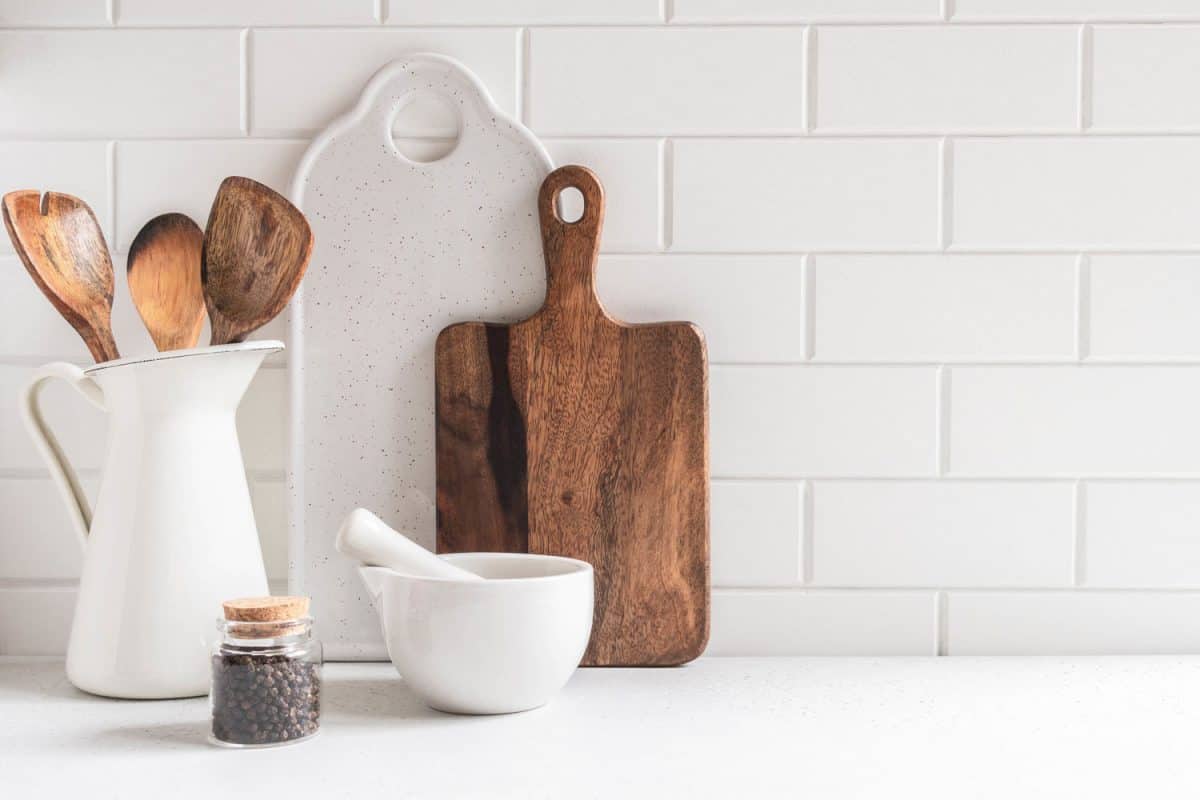
Most times, backsplash tiles will have a trim/edging around their top and sides, which prevents things like cookware from chipping their corners. You may also see backsplash tiles having an edging around each tile, which is a very common design practice.
Again, every kitchen is different, but if you want your tiles and backsplash as a whole to look cohesive, we recommend a trim of some kind.
What Do You Use For Trim On A Backsplash?
Generally, you'll want to use a decorative tile edge for the trim of a backsplash. Most designers will typically choose a similar molding color to the existing backsplash, so everything blends.
With that said, you can also blend materials. For example, you could try using a ceramic tile chair rail molding for stone or glass tile, so you can get creative.
Another creative way to finish the trim on a backsplash is to use a thin piece of wood. Home Decor AZ recommends painting the wood a similar color to your tiles to give your backsplash a cohesive look, so that's something else to consider.
How Do You Finish The Edges On A Backsplash?
For those ready to finish the edges on their backsplash, this won't be too hard. Luckily, there are a few ways to accomplish this, which include:
- Caulking the edges of your backsplash tiles.
- Coordinating tile moldings in natural stone and porcelain.
- Use metal to line the edges of your backsplash.
- Creating a 'Bullnose' edge (rounded edging).
Again, this comes down to your space, budget, and expertise, so if you want to stick to caulking, that's completely fine.
Of this group, caulking is the cheapest and easiest option, making it perfect for any skill set. Furthermore, there are also peel and stick options for backsplash tiles, which we recommend using.
Art3d Peel and Stick Trim For Backsplash
This peel and stick adhesive trim is ten feet long, is a Polyvinyl Chloride material, won't leave residue, and comes in various colors and sizes.
Where Do You End A Backsplash?
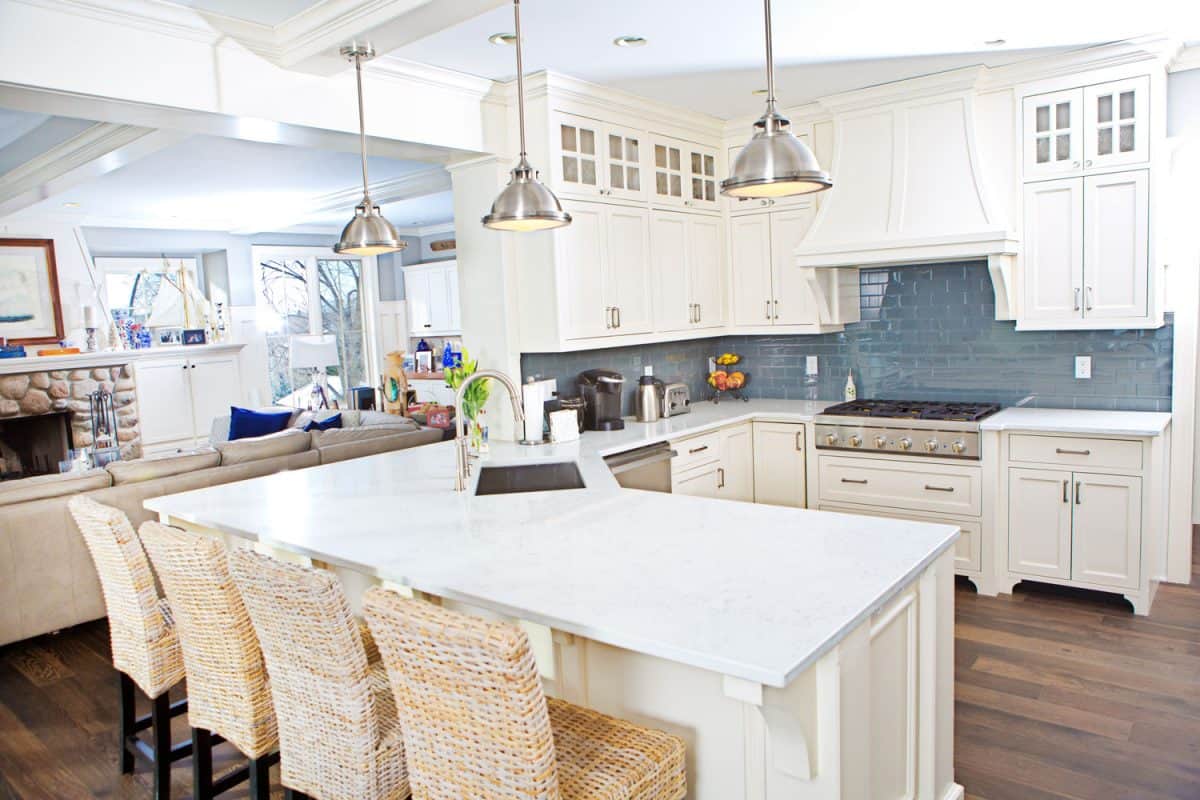
Ideally, you want to end a backsplash at the tile's natural stopping point. Doing this will give your backsplash an organic look and won't require extra fitting, saving time and money.
You can also end your backsplash near the window, a cabinet edge, or anything else in between, so there are plenty of options for this.
That said, you want to end your backsplash somewhere that makes sense, so try to cover as much wall space as possible.
What Do You Do At The End Of A Backsplash?
Most times, the ending of a kitchen backsplash will be right at the end of the cabinets, so you don't need to do much. We don't see any further action needed if you can try to align these two areas, so that's an easy idea to consider.
You can also create a trim around the edges of your backsplash if you don't have upper cabinetry, so there are a few ways to do this. Furthermore, rounding the end tiles of a backsplash can look nice, which would be more of a Bullnose design.
Should A Backsplash Go Behind The Stove?
Yes! You can certainly put a backsplash behind the stove. Typically, designers will use a durable, nonabsorbent backsplash near the stove to protect it from grease and cooking splatter.
Having tiles behind your stove (especially lighter ones) can also help brighten that area up a bit, which is great for darker kitchens.
You also want to make sure the backsplash you choose for behind the stove is easy to clean because it will end up getting messy.
Can I Use A Peel And Stick Backsplash Behind The Stove?
As long as the peel and stick backsplash is moisture and heat resistant, you should be fine putting it behind your stove.
Luckily, most manufacturers consider this while designing their peel and stick products, so it's common to find stove-friendly options.
For example, many vinyl peel and stick backsplashes work well in heat and moisture, making them perfect for a stove location. Installing a peel and stick backsplash is also very easy, so this is great for those wanting to DIY.
Art3d Peel And Stick Wall Tile Backsplash
This peel and stick backsplash has a multi-color tile design, resists heat and moisture, measures 12 x 12 inches, and comes with ten sheets.
Follow this link to see it on Amazon.
Should There Be A Gap Between Backsplash And Counter?
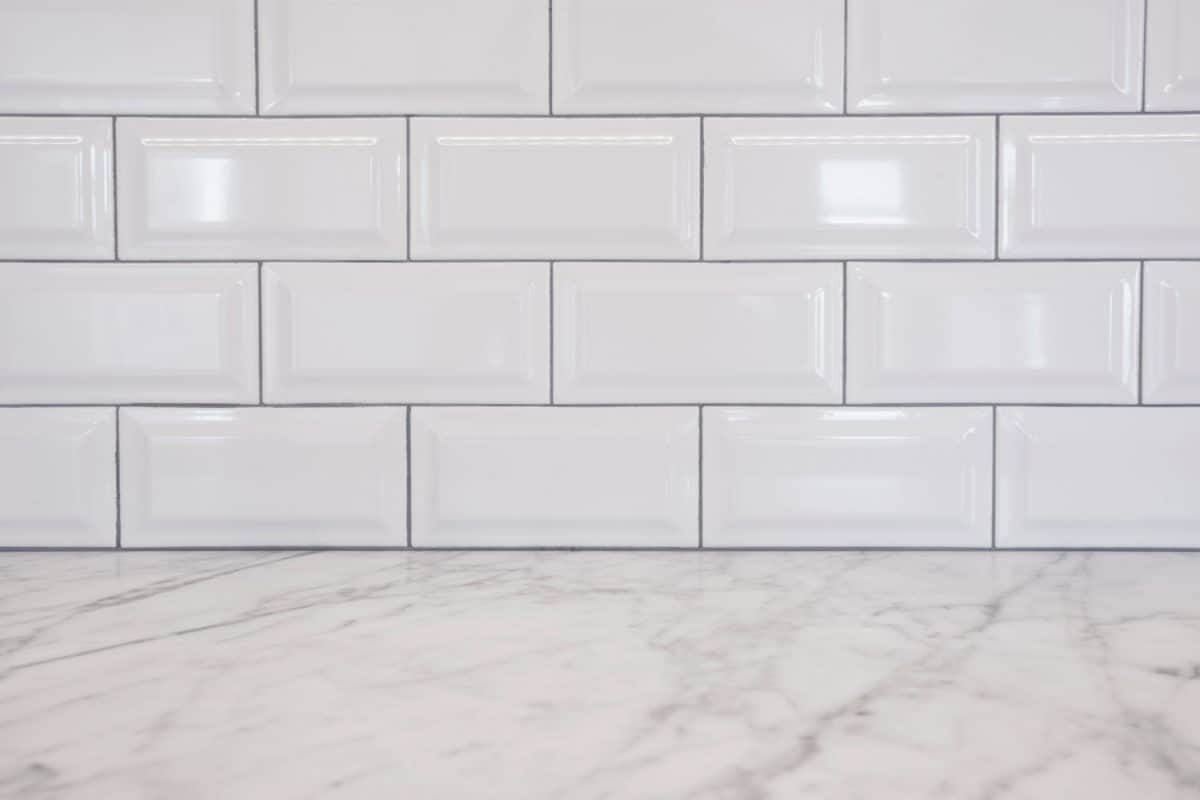
Yes, leaving a space between your backsplash and countertops is normal. Generally, this will be around 1/8 inches, so try to stick close to that measurement.
This small gap is commonly known as the 'expansion joint,' which allows your house to settle without causing damage to your tiles/countertops.
Leaving a small gap will also make cleaning your countertops and backsplash easier, as you can get between the two, so this is important for a few reasons.
How Do You Fill The Gap Between Backsplash And Countertop?
If you don't want to see the gap between your backsplash and countertop, there are ways to fill it. First, we recommend using acrylic latex or silicone caulk.
These will fill in the gap while also creating a trim for your tiles, which is always helpful. If the gap is wide, you might want to try putting a backer rod in first.
This essentially works like foam beading and supports the caulk/acrylic from bubbling or developing voids.
How Far Up Should A Backsplash Go?
In general, you want your backsplash to be installed four inches from the surface of the countertop. Again, this is just a standard design practice, so you can certainly add more tiling if you have more space.
Depending on your upper cabinetry, you may even want to extend your backsplash to 8-12 inches, so sometimes more is better.
Especially if you have tons of wall space you want to fill, adding in extra tiling can create a more cohesive, upscale kitchen design, which in turn will help your home's resale value.
Does A Kitchen Need A Backsplash?
Although a kitchen doesn't necessarily "need" a backsplash, we find them valuable. Considering how much aesthetic appeal they add to a kitchen's walls, adding a backsplash can make a world of difference.
On top of that, backsplash tiles tend to be inexpensive to purchase, so getting your project done shouldn't break the bank.
Adding in a backsplash can also protect your home's walls from kitchen messes, which means less repair and cleaning for you.
Are Backsplashes In Style?
Yes! Kitchen backsplashes are very much in style. Besides their overall design appeal, backsplashes give spaces a higher-end look, which only helps for resale.
Having a tile backsplash can also be a great long-term investment, as it should last for years to come, so we think it's worth checking out.
Again, everyone has different tastes, but adding in a backsplash is an in-style and easy way to spice up your kitchen's design.
To Wrap It All Up
Whether you have a backsplash or want one, designing it can be tricky. From what we found, a backsplash should have trim or edging of some kind. Doing this helps protect your backsplash tiles from damage while also giving them a cohesive look.
Furthermore, you can also try using caulk to edge your tiles if you want something cheap and easy, so that's our recommendation. There are also plenty of peel and stick backsplash ideas, which are easy to install.
Regardless, make sure to find a backsplash that works for you, and don't forget to create a trim or edging around your tiles.
Made it to the end? Check out these helpful related kitchen posts below!
11 Stunning Kitchen Backsplash Ideas With Granite Countertops
What Color Walls Go With Brown Granite Countertops?
21 Rustic Kitchen Backsplash Ideas That You'll Love



